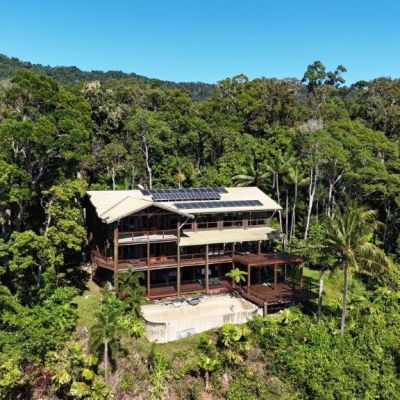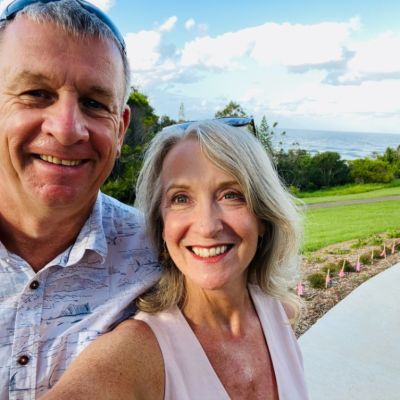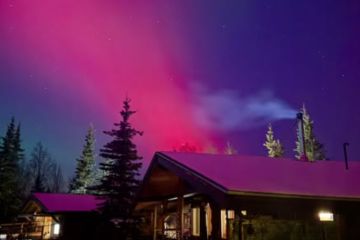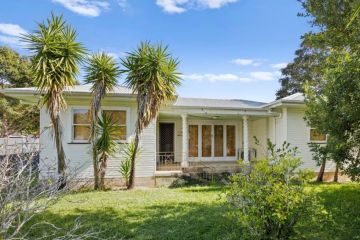The most profitable locations for property investors to short-term let
The most lucrative towns for investors to let out properties on the short-term rental market have been revealed in new research that highlights the earning potential of regional areas.
But experts warn demand for second homes in these kinds of areas affects the availability of long-term rental properties and pushes up rents.
The Whitsunday region in Queensland was ranked as Australia’s most profitable location for short-term rentals, with annual revenue potential of $141,372, on figures from research firm AirDNA.
It was followed by Singleton in the NSW Hunter Valley at $115,783 a year, then Exmouth in north-west WA at $101,976.
Coastal hotspots Byron Bay, Kiama, the Gold Coast and the Tweed made the top 10 with annual revenue of at least $86,000.
Victoria’s Mornington Peninsula made it into the top 20 at more than $74,000 a year, just below Ararat in the state’s west and the Alpine shire in its north-east.
AirDNA chief economist Jamie Lane said the annual revenue potential figure enabled investors to compare dissimilar markets, such as a beachside property with high summer rates against a CBD unit with steady occupancy year-round.
“Consistent performance across both pricing and occupancy delivers the strongest bottom-line results for Airbnb investment in Australia,” he wrote in his report Most Profitable Cities for Airbnb in Australia in 2025.
The study included any market with 100 or more listings and illustrates theoretical maximum earnings, not guaranteed returns. In the Whitsundays, for example, just under three in five properties are available year-round, bringing down their actual revenue each year.
In much of the Byron shire, the NSW government introduced a 60-day-a-year limit on stays where the host is not present. Sydney and parts of regional NSW have a 180-day cap. Victoria charges a 7.5 per cent short-stay levy.
University of Sydney professor of urban and regional planning Nicole Gurran warned it was difficult to find accurate data about actual short-term rental property revenue.
She said some short-term rental properties were extremely luxurious homes with a high rental yield, perhaps in coastal areas.
“Their rental revenues are wildly disproportionate to what a median rent in the area might be,” she said.
“The research that is available globally and the research we’ve been doing shows it’s only a portion of holiday rental properties that would attract a higher annual yield than long-term rental.”
She said some operators were trying to offset the cost of owning a second home, not trying to outperform the rental market.
“But that said, demand for second homes in areas where there’s also demand for primary homes and long-term rentals does have an impact on the availability of rental supply and pushes up rent and prices,” she said.
She said during sudden shifts in demand, such as when the pandemic began and city dwellers moved to regional areas, “the potential housing stock is not fully available.”
She said there was a time when some investors thought buying a second home would outperform long-term rentals, but that was less likely to be the case now.
Tenants’ Union of NSW chief executive Leo Patterson Ross has previously analysed whether it is more profitable for investors to list on the short-term or long-term rental market.
He found previously that in somewhere like Sydney’s Bondi where rents are high, the difference for a two-bedroom apartment was not pronounced. But in regional areas, there was potential for investors to make a lot more money in short-term letting.
“We’ve seen whole towns where significant portions of the available dwellings are put onto short-term rentals and then locals aren’t able to find a home,” he said.
But as many of these towns rely on tourism to support their economies, there was a need to find better ways to accommodate visitors, he said, and to shift some dwelling stock including holiday homes that are empty part of the year back into the residential market.

Airbnb head of public policy for Australia and New Zealand Michael Crosby noted a study that Airbnb commissioned from research firm Urbis which found non-hosted short-term rentals account for 1 per cent to 2 per cent of housing stock, nationally.
“Experts and economists agree – the root cause of the affordable housing crisis is a shortage of supply to meet demand and the leading factors limiting supply are not related to Airbnb,” Crosby said.
“Airbnb has long advocated for evidence-based regulation of the short-term rental sector, which balances tourism benefits with protecting housing.”
Stayz senior director of government and corporate affairs Eacham Curry said short-term rentals were not the cause of or solution to current housing pressures.
He said many short-term rentals would “never be available on the long-term rental market because they are family holiday homes, rented only when the family is not using it. Caps, taxes, and levies will not force families to put their homes on the long-term market.”
We recommend
We thought you might like
States
Capital Cities
Capital Cities - Rentals
Popular Areas
Allhomes
More
- © 2025, CoStar Group Inc.










